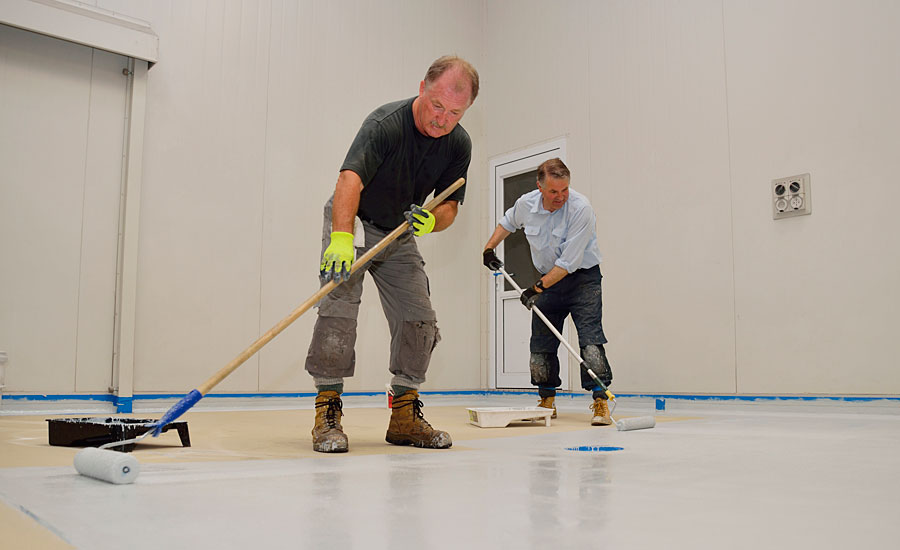Curing Epoxy Resins




Epoxy is one of those coatings that can be found in use just about anywhere. Its durability and protective qualities are the perfect match for many different applications. But as versatile, useful and strong as epoxy resins are, they are actually quite vulnerable and can be rather tricky to work with prior to a full and sufficient cure.
Caring for Epoxy
There are at least three prime concerns when it comes to dealing with epoxy, and these concerns have to do with storage, prep and curing/post curing. As far as storage is concerned, epoxy can be considered a temperature-sensitive liquid, as temperature sensitive as any paint. Storing epoxy in drastically cold or hot conditions is never advantageous. Long-term exposure to low or high temperatures can cause compromising effects. In order to combat this dilemma, you can maintain the proper storage temperature for your epoxy by either heating/cooling the space you store it in, or by taking a far more economical approach through utilizing heating and cooling solutions for buckets, barrels, drums or any other storage container used for epoxy. Thankfully, there are some pretty handy solutions on the market that allow you to cool or warm your epoxy in the same container you store it in. These portable solutions come in the form of bucket heaters, bucket coolers, barrel heaters and barrel coolers, and can even be customized for unique storage units. So wherever you’re storing your epoxy, make sure you’re storing it at the proper temperature.
Along with storage comes the concern for proper prep. In fact, barrel heaters aren’t only useful for storage purposes, but also for preheating epoxy prior to application. If the type of epoxy you’re using is like so many, then it will maintain its liquidity and other vital characteristics best when kept within an ideal, 30 degree temperature range. This means that depending on the ambient conditions in which you’re working, you may need to preheat your epoxy in order for it to work best during the curing process. It is common for epoxy that has been compromised by temperature fluctuation to produce discoloration or yellowing. It’s also common to experience blushing, uneven glossing and even poor inter-coat adhesion if your epoxy isn’t applied within the proper temperature ranges. You can avoid all of this simply by prepping your epoxy for ideal application. So remember, when applying epoxy, it’s imperative to keep both the resin and hardener at the proper temperature.
Curing Epoxy
Equally as vital as the storage and prep of epoxy is the curing process that it undergoes after initial application. Maintaining the temperature for the curing process can be far trickier than storage and preheating. Bear in mind that some epoxy needs to cure in stages in order to prevent the overheating associated with exothermic reactions. With this as the case, you’ll need to have a solution that offers precise and staged temperature control for the curing and post curing of your epoxy.
A good majority of epoxies have to cure and post cure at relatively high temperatures, but without going too high (as already mentioned). So if you’ve just coated a structure or floor with a high-quality epoxy, it means you may have to add heat to the equation in order to get the best cure possible. However, doing this through make-shift means can be costly and time consuming. What do we mean by make-shift? If you have to truck in large space heaters in order to bring the ambient temperature up to an ideal range for curing, this would be considered a make-shift means. If you have to construct enclosures around the coated area in order to create somewhat of an oven, this would be considered a make-shift approach.
Regardless of the fact that we’ve just referred to these approaches as make-shift solutions, they are actually employed by those dealing with epoxy resins on a regular basis. Without a knowledge of the better alternative, it makes sense that you might be left to raising the ambient temperature around the epoxy. But here’s the trick; don’t worry about the ambient temperature. To be more precise, don’t worry about altering the ambient temperature. If you’re forced to alter the environment in which your epoxy is applied, then you’re going to be spending a whole lot of time and undue costs accomplishing it. Thankfully, there’s a better way of going about it.
Rather than raising the temperature surrounding the application, you can focus on raising the temperature of the coating itself. By using an epoxy curing blanket you can cure and post cure your epoxy at whatever temperature it requires, even if that temperature is really high. This sort of solution is used among manufacturers in the composite space where resins have to cure at high temperatures for extended periods of time. And the same approach can be used when dealing with epoxies used in floor coatings and other similar applications. The epoxy curing blankets on the market these days are easy to use and transportable. What’s more, the higher-end blankets also come with the option of temperature controllers, allowing for programmed and set temperature variances for staged curing.
From storage to post curing, epoxy comes with its own challenges. But when you approach the matter with the right set of tools, it can be easy and not intimidating.
For more information, visit www.powerblanket.com/curing-epoxy-resins/.
Looking for a reprint of this article?
From high-res PDFs to custom plaques, order your copy today!









